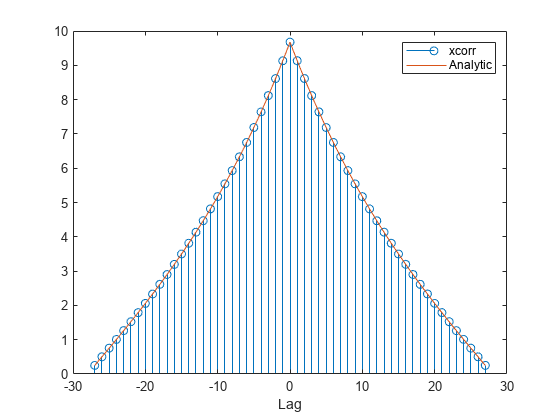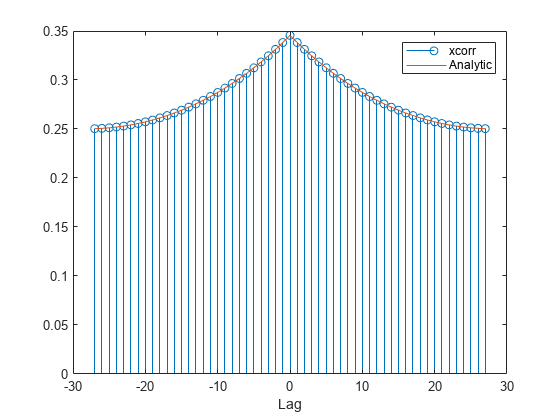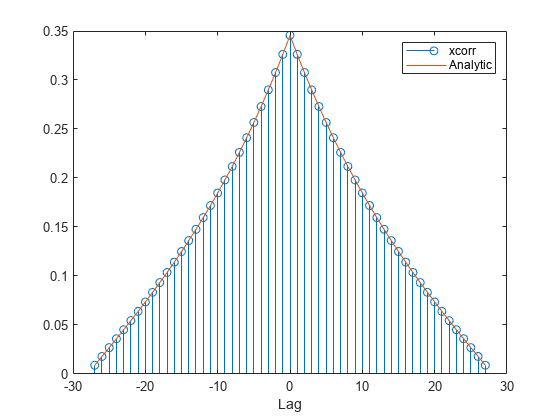지수 시퀀스의 자기상관 함수
28개의 샘플로 구성된 지수 시퀀스 ()의 자기상관 함수를 계산합니다.
a = 0.95; N = 28; n = 0:N-1; lags = -(N-1):(N-1); x = a.^n; c = xcorr(x);
결과의 정확성을 확인하기 위해 해석적으로 를 구합니다. 더 큰 샘플 레이트를 사용하여 연속적인 상황을 시뮬레이션합니다. 시퀀스 ()의 자기상관 함수는 인 경우 다음과 같습니다.
fs = 10; nn = -(N-1):1/fs:(N-1); dd = (1-a.^(2*(N-abs(nn))))/(1-a^2).*a.^abs(nn);
동일한 Figure에 시퀀스를 플로팅합니다.
stem(lags,c); hold on plot(nn,dd) xlabel('Lag') legend('xcorr','Analytic') hold off

계산을 반복하되 이번에는 무편향 자기상관 추정값을 구합니다. 식으로 편향되지 않은 추정값이 산출되는지 확인합니다.
cu = xcorr(x,'unbiased'); du = dd./(N-abs(nn)); stem(lags,cu); hold on plot(nn,du) xlabel('Lag') legend('xcorr','Analytic') hold off

계산을 반복하되 이번에는 편향 자기상관 추정값을 찾습니다. 식으로 편향 추정값이 산출되는지 확인합니다.
cb = xcorr(x,'biased'); db = dd/N; stem(lags,cb); hold on plot(nn,db) xlabel('Lag') legend('xcorr','Analytic') hold off

지연 0에서의 값이 단위 값이 되는 자기상관 추정값을 찾습니다.
cz = xcorr(x,'coeff'); dz = dd/max(dd); stem(lags,cz); hold on plot(nn,dz) xlabel('Lag') legend('xcorr','Analytic') hold off
